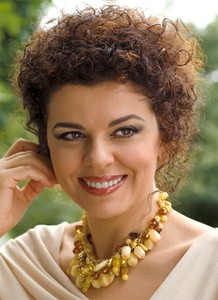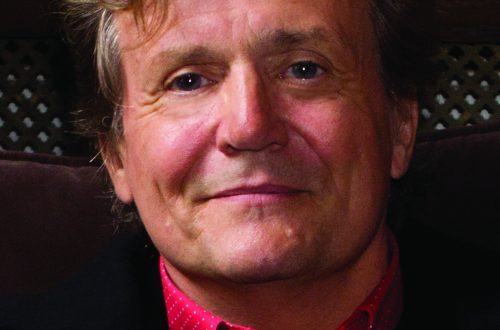
Fiorenza Cedolins |
Fiorenza Cedolins

Fiorenza Cedolins was born in Anduins, a small town in the province of Pordenone (Friuli-Venezia Giulia region). Already at an early age, Chedolins made her debut on the professional opera stage (1988). Her first main role was Santuzza in Mascagni’s Rural Honor (Teatro Carlo Felice in Genoa, 1992). Possessing a plastically soft voice of a rare dark color and a large range, as well as a powerful arsenal of technical means that allow her to perform both the parts of a lyric-dramatic soprano and feel confident in the dramatic (verist) repertoire, the singer at the initial stage of her career has been successful for several seasons in a row. collaborates as a guest soloist with the festival in Split (Croatia). The stylistically heterogeneous parts that have to be performed during this period become the starting base on which you can improve your singing abilities and accumulate artistic experience. So, with enviable zeal, Chedolins masters the widest repertoire from Monteverdi’s Duel of Tancred and Clorinda to Orff’s Carmina Burana, from Rossini’s Moses to Richard Strauss’s Salome.
As already noted, the fateful turn in the career of the Chaedolins occurs in 1996. As the winner of the Luciano Pavarotti International Competition, she gets the opportunity to sing Puccini’s “Tosca” in Philadelphia in the same performance with the main tenor of the planet. In the same year, the singer had another Santuzza at the Ravenna Festival (conductor – Riccardo Muti). In the summer of 1997, KICCO MUSIC recorded on CD Cilea’s “Gloria” with Cedolins in the title role from a performance at the San Gimignano Festival. In the autumn of the same year – again Santuzza at the Mascagni festival in Livorno. Thus, the very nature of the voice naturally determines the basis of the singer’s repertoire as “Veristic-Puccini”.
However, starting in October 1997, Cedolins made the decision to subject his repertoire to a carefully considered revision. Preference is now given, first of all, to lyrical heroines, as well as parts of a lyrical and dramatic role, requiring a certain flexibility and mobility of the voice along with a warm, thick coloring of the sound and saturation of the vocal texture. Forays into the repertoire of verismo and “grand opera” (in this case, this term refers to full-fledged dramatic parts) gradually begin to lose their systematically dominant character.
From that moment on, the number of Chedolins contracts grows like a snowball. One by one, the largest opera stages of the world submit to her. The trajectories of her engagements stretch from New York’s Metropolitan Opera to London’s Covent Garden, from Paris’ Opera Bastille to Barcelona’s Liceu, from Zurich’s Opera House to Madrid’s Real Theatre. The author of these lines is twice lucky to hear the singer in performances of the Arena di Verona theater: in Verdi’s operas Il trovatore (2001) and Aida (2002). And, of course, the routes of creativity naturally lead the performer to the wide sacred road of the La Scala theater – the opera Mecca that any singer dreams of conquering. The Milan debut of Cedolins dates back to February 2007: the main role in Puccini’s Madama Butterfly (conductor – Myung-Vun Chung) makes a splash.
One of the publications of enthusiastic Italian critics of that period in the magazine Messaggero Veneto, an interview with the singer, is called “The name of La Scala is Fiorenza Cedolins.” Here is what is written in its preamble: “It was a real insanity of the public. The Temple of the Italian Opera, one of the most revered places for any artist, rose to his feet and “shouted” with pleasure and approval. Fiorenza Cedolins, a young soprano, touched, captivated, captivated the most privileged and sophisticated opera audience – the audience of the La Scala theater in Milan – with an amazing performance of the main part … ”The next important stage of cooperation with this theater, as already noted at the beginning of our notes, is the opening this season at La Scala. And there is no doubt: creative contacts with this temple of art will definitely continue in the future.
The singer’s voice is so typical of the Italian vocal school that involuntarily there are historical reminiscences with the voice of the legendary Renata Tebaldi. Moreover, they are by no means unfounded. Sabino Lenochi, who personally knew Tebaldi, shared his memories during the press conference. In one of the meetings with the great prima donna, he gave her the recordings of Chedolins to listen to – and Tebaldi exclaimed: “Finally, I found my creative heiress!” The current repertoire of Fiorenza Cedolins is very impressive. It features almost all of Puccini (eight of his ten operas). Verdi’s operas make up a huge part of it. Let’s name just a few of them. Among the early works are “Lombards in the First Crusade”, “Battle of Legnano”, “Robbers”, “Louise Miller”. Among the later opuses are Il trovatore, La traviata, Simon Boccanegra, The Force of Destiny. And, finally, the operas that complete the work of the maestro from Busseto are Don Carlos, Aida, Othello and Falstaff.
The layer of romantic operatic bel canto in the repertoire of Cedolins is small (Bellini’s Norma, Donizetti’s Polieucto and Lucrezia Borgia), but this is objective and natural. In the case when it comes to interpreting the repertoire of the romantic Italian bel canto of the XNUMXth century, the singer approaches his choice most meticulously and selectively, strictly making sure that her voice fully complies with the unshakable standards of style, both in tessitura and in her instrumental characteristics.





